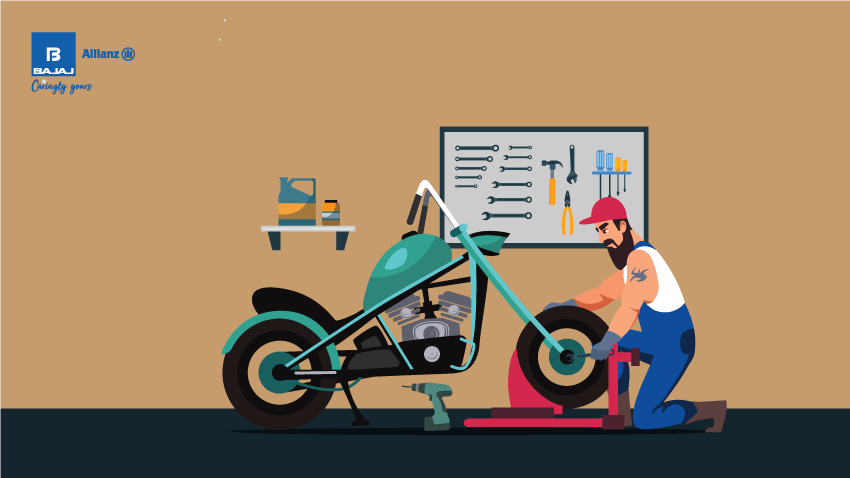Changing a bike tyre is an essential skill that every rider should master. Whether you're faced with a flat tyre or simply need to replace worn-out treads, knowing how to change your bike tyre can save you time, money, and hassle. In this comprehensive guide, we'll walk you through the step-by-step process of changing your bike tyre like a pro.
Regular maintenance of your bike includes checking and replacing tyres when necessary. Understanding the process of tyre replacement ensures that you can handle unexpected situations confidently and efficiently. Follow these simple steps to change your bike tyre seamlessly.
When to Change Your Bike Tyre
Before delving into the steps, it's essential to know when to change your bike tyre:
- Ideally recommended to replace your bike tyre within 5 years of its manufacturing.
- Severe damage or excessive wear and tear may necessitate early replacement, especially after a long road trip.
Things You Will Need
Before you begin, gather the following tools and equipment:
- Valve core tool
- Bead breaker
- 2 C-clamps (optional)
- Tyre irons or spoons
- Silicone lubricant spray
- Breezer tyre tool
- Air pump compressor
- Gloves
- Waterproof attire
- Wheel wedges
- Working flashlight
- Flat wooden board
Step-by-Step Process to Change Bike Tyres
Follow these 10 easy steps to replace your bike tyre effortlessly:
Step 1: Detach the Wheel From Your Motorcycle
- Lift your bike's end to raise its wheel off the ground.
- Remove the axel using a socket and unleash the chain.
- Take out the brake calliper and put the axel back to maintain the calliper's position.
Step 2: Remove the Schrader Valve and Let the Air Escape
- Use a valve core tool to unscrew or snap into the valve.
- Allow the air to escape completely from the tyre.
Step 3: Mark Your Wheel’s Spin Direction
Use a permanent marker to draw an arrow at the outer edge of the rim to denote the spinning direction.
Step 4: Break Your Bike Tyre’s Bead
- Use a bead breaking tool to insert between the wheel rim and tyre.
- Move it around the bead to loosen the tyre.
- Apply silicone lubricant or a soap and water mixture to prevent sticking.
Step 5: Lift Your Bike’s Tyre off the Rim
- Use tyre levers or spoons to raise the bead and remove it from the rim.
- Carefully insert the levers and push down to pull out the tyre.
Step 6: Clean and Lubricate the New Tyre and Inside of the Rim
- Clean the rim's inner part to remove debris.
- Coat the new tyre's boundary with bead lubricant or hand soap.
Step 7: Place That New Tyre on Your Bike’s Rim
- Match the spinning direction marked earlier.
- Locate the red dot beside the valve stem for proper alignment.
Step 8: Attach One Side of Your Bike’s Tyre on the Rim
- Squeeze and shove the tyre under one side of the rim using tyre spoons.
- Repeat the process on the other side of the rim.
Step 9: Inflate Your Tyre and Reinstall the Valve Stem
- Partially inflate the tyre until you hear a popping sound.
- Reinsert the valve stem and tighten it securely.
Step 10: Re-mount the Wheel onto the Motorcycle
- Follow your user’s manual for remounting the wheel.
- Check tyre pressure, align wheels, adjust chain tension, and tighten fasteners.
Do’s and Don'ts of Changing a Bike Tyre
Here are some essential tips to keep in mind:
Do’s of Bike Tyre Replacement:
- Remove the wheel and let all air out before starting.
- Spray lube after each step.
- Air the tyre to the correct PSI.
Don’ts of Bike Tyre Replacement:
- Don't inflate the tyre before fixing the bead properly.
- Avoid using the wrong type of lube.
- Don't mess with wheel alignment.
Additional Considerations
- It's recommended to change both bike tyres simultaneously for balanced performance.
- Ensure proper cleaning and lubrication before installation.
- Tighten all screws and fasteners securely to prevent accidents.
Frequently Asked Questions
Does it affect my ride if the wheels are not balanced after a tyre change?
Proper wheel balancing ensures smooth and stable riding. Unbalanced wheels may cause vibrations and affect handling.
How long can it take to change a motorcycle tyre?
The tyre change process typically takes about half an hour on average, but it may vary based on experience and equipment availability.
Mastering the art of changing bike tyres empowers you to handle unexpected situations confidently and ensures a safe and smooth riding experience. With proper maintenance and care, your bike tyres will serve you well on every journey.
In addition to prioritising safety on the road, it's essential to safeguard your financial interests with comprehensive
two wheeler insurance. With the right
motor insurance coverage, you can ride with confidence, knowing you're protected in case of accidents or unforeseen events. Before you
renew your bike insurance, you can take an additional step of using a
two wheeler insurance calculator to get premium estimates.*
*Standard T&C Apply
Disclaimer: The content on this page is generic and shared only for informational and explanatory purposes. It is based on several secondary sources on the internet and is subject to changes. Please consult an expert before making any related decisions.
Insurance is the subject matter of solicitation. For more details on benefits, exclusions, limitations, terms, and conditions, please read the sales brochure/policy wording carefully before concluding a sale.
 Service Chat:
Service Chat: 

